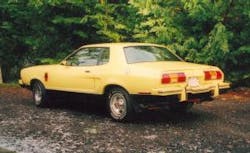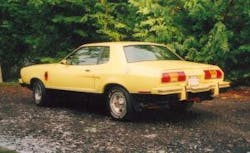Changing technology doesn’t change the importance of weather forecasting
Back in 1987, when I was 16, I spent $300 on my first car – a 1976 Ford Mustang, color banana yellow. Yes, banana yellow – because at the time the idea of a car, and one I could afford, was more important than the color. Now, I would never purchase a banana yellow-colored car because times have changed.
Back then, if I wanted to know the weather, I turned on one of the three local television channels our rooftop antenna (usually to the channel that was coming in the best on that day) could receive and I watched the weatherman use his “radar” and eyewitness weather watchers predict how much snow we would get. Sometimes he was right, but more often he was wrong on the amounts.
Last week, I had my choice of watching no less than 15 channels that were devoting 24-hour weather coverage to Winter Storm Juno. The weathermen were throwing around terms like “interactive radar,” “dual polarization radar,” “Doppler 3000,” the “European Model” and “GFS” (terms us East Coasters have become familiar with thanks to recent hurricane activity). One local station even trotted out a “computer model” that predicted my Connecticut city would receive 43.8 in. of snow. We got 15 in., so I guess even with the advancements in weather forecasting, accuracy is still lacking.
So what’s the point? Like anyone else, trucking companies are at the mercy of weather and they rely on weathermen to accurately forecast conditions to ensure their vehicles complete their scheduled routes.
Ironically, the way trucking companies are receiving data today is not that different from the way I received my forecast back in 1987. Now, though, trucking companies don’t need to turn on their local TV station (imagine trying to route 1,000 trucks across the country using only local TV weather forecasts) because software companies are providing weather modules (ALK is the latest) that help carriers proactively route trucks around poor weather conditions. Consider this the traditional method of forecasting.
But there is another element that has been added. Thanks to in-cab communications, sensors, and the proliferation of social media and mobile devices, more trucking companies are able to receive real-time information on current conditions from their drivers. Telogis, for one, is using crowd-sourced data from drivers to update its customers on current conditions, helping them make critical decisions that not only make the difference between on-time and late deliveries, but could literally be life or death decisions for their drivers.
“Most of the fleet operations want to err on the side of caution,” Kelly Frey, vice president-product marketing, for Telogis, told me last week as we discussed how technology and social media is changing the routing landscape. Frey quickly added, though, that because of these changes, “the future is really now.”
I’ll add one more. Like that 1987 weatherman who used “eyewitness weather” reports to keep me informed, we’re still getting that information and we’re still getting “eyewitness weather,” it’s just coming in a different form. Turns out we have always been living in the future, it’s just the technology that is making it easier for us to see.

